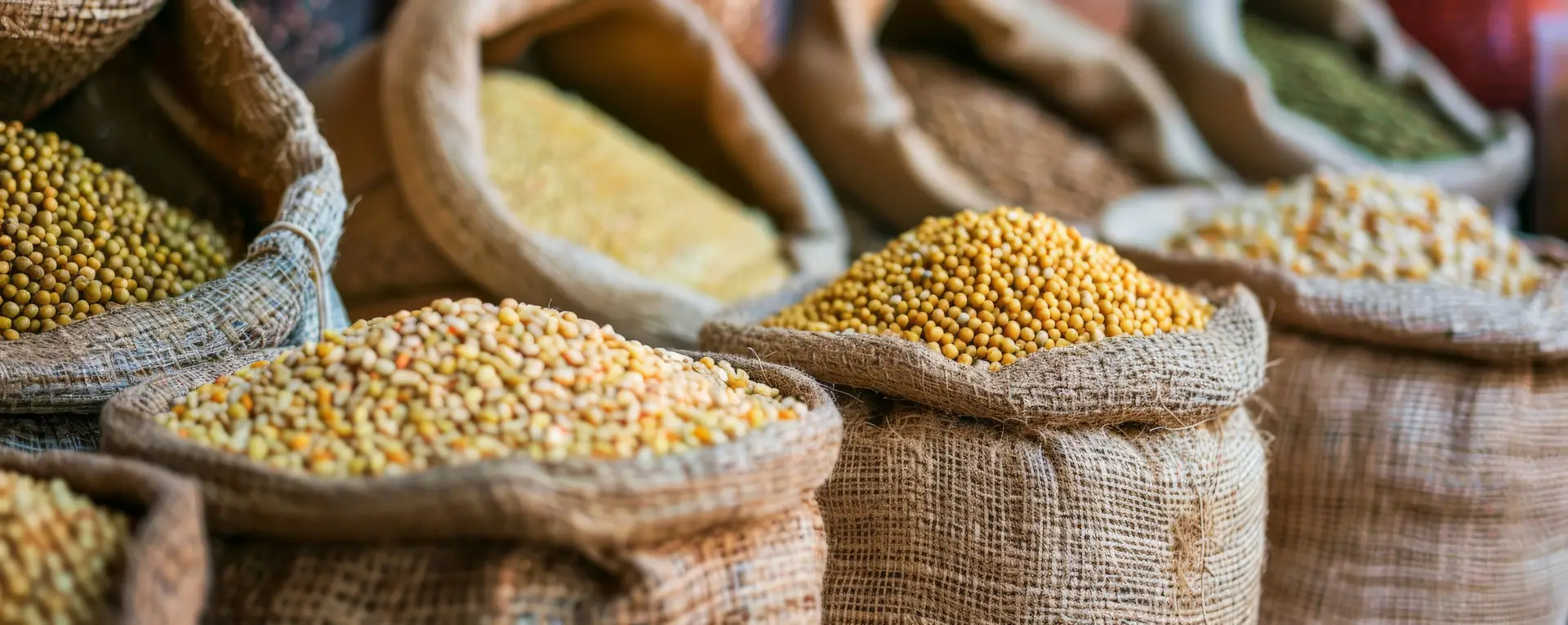Summary: The global pulses market is experiencing significant pressure from multiple directions. India's extension of import policies, China's retaliatory tariffs on Canadian pulses, and Myanmar's record black matpe harvest have created a perfect storm for a bearish market. This analysis examines current price trends across major pulses varieties and explores how geopolitical decisions are reshaping traditional trade flows.
Market Overview: Flat to Bearish Sentiment Prevails
The global pulses market continues to show flat to bearish sentiment, driven by two major policy developments and a record harvest. India's decision to extend imports of key pulses including black matpe, pigeon peas, and yellow peas until May 31, 2025, combined with China's imposition of a 100% tariff on Canadian pulse imports, has created significant downward pressure on prices. Adding to this landscape, Myanmar's record black matpe crop this year has further influenced global market dynamics.
Regional Price Movements
Pigeon Peas (Tur)
Myanmar has adjusted its pigeon peas pricing strategy, reducing lemon type offers to $810 per tonne for April delivery to India. This represents a modest 1% decline over the past four weeks. Simultaneously, Myanmar is offering 2022-23 pigeon pea (red gram) whole at $730 per tonne f.o.b., indicating efforts to clear inventory.
Black Matpe
Leveraging its record harvest, Myanmar has strategically reduced black matpe prices across quality grades:
- Superior quality: $890 per tonne (April delivery)
- Fair average quality: $810 per tonne (April delivery)
- Pakistan-bound superior quality: $900 per tonne
- F.O.B. prices for superior quality: $830 per tonne
By comparison, Brazilian prices, which were fixed prior to sowing, remain higher at $940 per tonne for April delivery.
Yellow Peas
The yellow peas market is experiencing the most dramatic disruption following China's 100% tariff on Canadian pulses. This policy shift has forced Canadian sellers to slash their offers:
- China-bound shipments (April-May delivery): $365 per tonne
- India-bound shipments: $430 per tonne
- Bangladesh-bound shipments: $475 per tonne
Overall, yellow peas prices have declined approximately 5% in the past four weeks.
Shifting Trade Opportunities
In a classic case of "one country's pain is another's gain," Russia has capitalized on Canada's disadvantaged position by raising its prices for China-bound yellow peas to $420 per tonne for April delivery—representing an 11% increase over four weeks. However, Russian and Ukrainian suppliers have maintained more competitive pricing for India and Bangladesh at $390 and $385 per tonne, respectively.
Mixed Trends in Lentils
Red Lentils
The red lentils market presents a mixed picture with divergent pricing strategies:
Australia:
- Maintaining prices for India, Bangladesh, Pakistan at $675 per tonne
- Consistent $660 per tonne offers to UAE
- Increased prices for Sri Lanka
Canada:
- Aggressively cutting prices by $20 per tonne to compete in India, Turkey, and Sri Lanka
- Current offers stand at $680, $685, and $695 per tonne respectively for April delivery
Russia:
- Intensifying competition by reducing Pakistan-bound offers by $40 to $680 per tonne
Green Lentils and Green Peas
Russia continues to challenge Canadian dominance in green lentils by offering competitive prices to India ($935/tonne) and Turkey ($915/tonne) for April delivery. This competitive pressure has compelled Canada to reduce its rates by $20 per tonne, bringing offers to $1,075 for India and $1,080 for Turkey.
In the green peas segment, Canada has responded to market pressures by cutting prices by $35 to $535 per tonne for China-bound shipments scheduled for April-May.
Desi Chickpeas Await Direction
Desi chickpeas prices remained stable last week as the market looks to India for policy direction. With India's duty-free import window for desi chickpeas set to close on March 31, 2025, the trade anticipates potential duty reinstatement, especially considering the ongoing rabi (winter) crop harvest.
Australia, which harvested a record 2.3 million tonnes this year, is offering chickpeas to various markets:
- India: $690 per tonne (May delivery), $675 per tonne (April delivery)
- Pakistan: $700 per tonne
- Nepal: $710 per tonne
- UAE: $680 per tonne (April delivery)
Myanmar's competing offers stand at $710 per tonne.
Conclusion
The global pulses market is undergoing a significant transformation driven by policy decisions and geopolitical tensions. The tariff conflict initiated by former US President Donald Trump has triggered retaliatory measures from China and Canada, creating ripple effects throughout the global pulses trade. As these trade relationships evolve, new corridors are emerging while traditional flows face disruption.
For traders and importers, this period requires heightened vigilance and adaptive strategies. India's forthcoming decisions on duty-free imports will provide crucial direction for the market in the coming weeks. Meanwhile, the emergence of Russia as an alternative supplier to China represents a structural shift worth monitoring.
